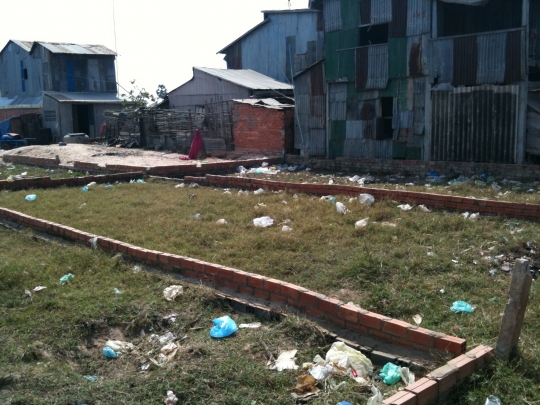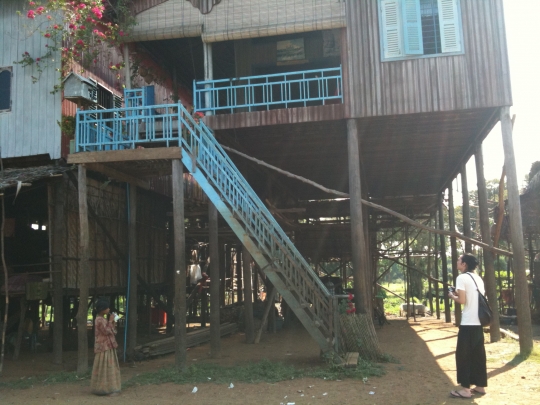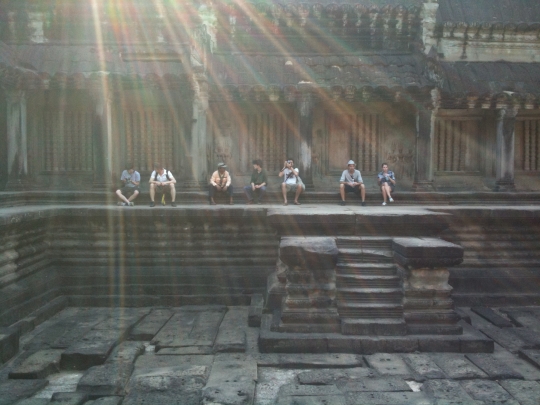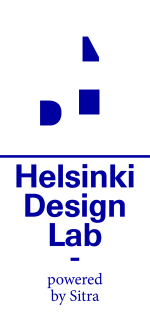All posts by Seungho Lee
This post continues the story of Seungho’s trip to Cambodia with Aalto University. Read the first part if you want to catch up...
So here we were, nine of us from five different countries seeing Cambodia for the first time. Seeing and living were very different from reading, watching and listening in comfortable homes and lecture halls. Things taken for granted at home were not easily achievable here: clean water, sanitation, sewage management, waste management and education, just to name a few.
We were lucky to have people with many different backgrounds: industrial and strategic design, architecture, urban planning and landscape architecture, which enabled each of us to focus on a few topics to develop deep insight so that we could help others see problems from various perspectives while working in teams. Nightly briefings kept everyone clued in and these discussions were very fertile. We were also lucky to have students from different parts of the world in the course, as well as working with Cambodian students during our stay, which made the whole visit fluent and fruitful. Soon we’ll return to Helsinki and form groups with those who did not travel, expanding the diverse set of perspectives even more.
We are free to choose a site for our studio projects. Among the most terrible of the relocation sites was Trapieng Krasang, where the urban poor from four different places were involuntarily relocated to some 20kms outside the city and they now struggle to survive. This is a population of Tuk-Tuk drivers, Moto-Dub drivers, bakers, street fruit vendors, waiters and waitresses who have been relocated away from their jobs and now have no income. One lady, for example, makes two and a half dollars a day if she goes to the city to sell vegetables. However, it costs two dollars to get to the city! The relocated families were each given nothing but a 5 by 12 meter plot on a former rice field. The earth is fertile there, but the plot is far too small to be the source of living, let alone the money to build a shelter.

Empty plots in Trapieng Krasang. Many of the evicted families sold the plots for very cheap price and headed back to the city slums due to the lack of job opportunity. Sold plots have become the subject of speculation, which will make the rich richer.
This is compounded by the issue of unclear entitlements, which dates back to the Khmer Rouge regime when many citizens were herded out of the city. One third were killed and many of the survivors never returned. Eventually, those who did return to the city settled wherever they could – with whatever means they could. A few decades later, the Cambodian government, challenged with deep-rooted corruption, is selling the prime locations of Phnom Penh city to private investors who are taking advantage of murky land ownership status.
Development in the city of Phnom Penh is another significant problem. Two years back, a private investor bought the Boeung Kak Lake area which is about 1 square kilometer and began filling in the lake to build a hotel and resort. People near the lake have been forcibly relocated and a large fire during our stay in Phnom Penh cost hundreds of families their homes in a single night. Now Boeung Kak Lake is as small as one third and soon will be 10 per cent of its original size. As summer brings monsoon season we will see the impact of the such radical environmental changes. Recently the Royal University of Fine Art as well as the National Museum have been sold to a private investor and the students are under threat of eviction.
![Boeung Kak lake as of March 2010.
Photo credit: Save Boeung Kak Campaign [http://saveboeungkak.wordpress.com]](../peoplepods/files/images/383.540.jpg)
Boeung Kak lake as of March 2010.
Photo credit: Save Boeung Kak Campaign [http://saveboeungkak.wordpress.com]
Some can say that development in Phnom Penh is giving jobs to construction workers, hopefully boosting the economy, and making the city a better place to live in the end. However, the number of the people evicted from the city is much higher than the number of workers hired. Does development have to be at the expense of so many homes, jobs, and lives lost?
The economy of urban poor in Phnom Penh is shallow and fragile: many of their livelihoods are very much dependent on tourism, a competitive industry with significant competition from nearby Bangkok. Cambodia imports many things, including foodstuffs, from Thailand and Vietnam, thus making commodities expensive. The shift from agrarian to industrial society, then an industrial, and on to a service and knowledge-based economy appears to be a long journey for Cambodia.
City in Crisis course does not pretend that problems of this nature can be mitigated immediately. Rather, it aims to have us students aware of and ready for the real problems of architecture and design for a longer term.
Back in Helsinki, we’re focusing on five different projects: a master plan including urban farming solutions for the relocation sites, in particular Trapieng Krasang as a case study; a “sub-center” concept for relocation sites, which brings markets and basic facilities to the area; the rehabilitation of remaining lake areas south of Phnom Penh, with specific attention to management of sewage flow; disaster management for slum inhabitants; and finally mine, a strategic road map and a framework for the economical development of the urban poor of Cambodia.
My question started from the living condition of Trapieng Krasang but my interest has soon extended to the economy of urban poor and the mindset: what does a pathway to economic stability look like for the relocated families of Trapieng Krasang?
I’m Seungho Lee, a Masters student at Aalto University School of Art and Design, studying in Industrial and Strategic Design and currently working with Helsinki Design Lab as an intern. My studies have taken me to Cambodia, where Aalto University's City in Crisis course is expanding the design discourse to include history, corruption, land entitlement, education, political enfranchisement, economics and more. This post was written a while ago, and it's part one of three covering my studies in the City in Crisis course.
As I type this, I’m 8000km away from home, waiting for a return flight from Phnom Penh, Cambodia back to Helsinki. I’ve been here for two weeks with nine of my fellow students as part of the City in Crisis course. Although I came to the airport three and a half hours early, I don’t mind because I wanted to escape from the city: there’s been a lot to digest after two quick weeks of fieldwork.
During that time we’ve been visiting Angkor Wat, the floating village near Siem Reap, Silk Island, a few slum areas and few eviction sites in Phnom Penh as well as relocation sites where those evicted now struggle to survive. We've also met and learned from representatives from various NGOs: STT, OPC, UN Habitat to name a few. Corruption, lack of secure tenure, almost no industry, false development, lack of education, slavery… this is the reality for many of Cambodia’s urban poor.

Floating village, a vernacular principle in Cambodia where the rainy season continues for six months.
Architects in the wealthy parts of the world have a tendency of being primarily interested in what their more successful counterparts in other wealthy parts of the world are busy with. The professional magazines in Europe, North America and the rich parts of Asia are concentrating on the “wow-factor” and its various manifestations. It is far less common that these publications deal with the everyday problems of the majority of the world’s problem.
– Hennu Kjisik, Veikko Vasko, & Hunphrey Kalanje. The Final Report of City in Crisis, May 2009
This phenomena is evident in recently published Phaidon Atlas of Contemporary Architecture that introduces 16 Finnish projects among 588 European projects, but only 26 projects from whole Africa and 184 projects from Asia. As pointed out by Hunphrey Kalanje, one of teachers of the course, architecture is in many cases political: it works with capital, for capital, and by capital.
The City in Crisis course has been offered since 1993 by the department of architecture in Aalto University School of Science and Technology with an aim of strengthening the global awareness and social conscience of its students, as well as increasing our understanding of the realities of life and conditions of professional work in developing countries.
Since these things are notoriously difficult to be taught in lecture halls and studios, the annual fieldwork period has become an essential part of the teaching and learning process since the beginning. After a total of ten years in Africa - Rusfisque, Benin and Grand Popo in particular - City in Crisis has turned its eyes to the east, and the first group of students traveled to Cambodia at the end of February 2008.

Some of my fellow students in the heart of Angkor Wat. One can easily imagine how glorious the Khmer civilization once had been.
The course is designed in two parts: the first of which aims to acquaint its students with various development issues all over the world and local vernacular principles. During the autumn semester in 2009, we read about and studied about four themes: development discourse, global issues, urban agendas, and construction in developing economies, which was followed by research into the vernacular principles of indigenous architecture in different climates.
The second part consists of lectures and seminars dedicated to issues in Cambodia, the fieldwork to Phnom Penh and Siem Reap and eventually the studio work back in Helsinki. From January of this year invited lecturers have talked about issues in relation with water, development, corruption, environmental issues, capital, and speculation in Phnom Penh.
After studying these issues from a range of scales, both from the global to the local in Cambodia, and from the past to the present we packed our bags for two weeks in Cambodia. It was time to see and to “live” the reality.
Check in tomorrow for more about our time in Cambodia.



